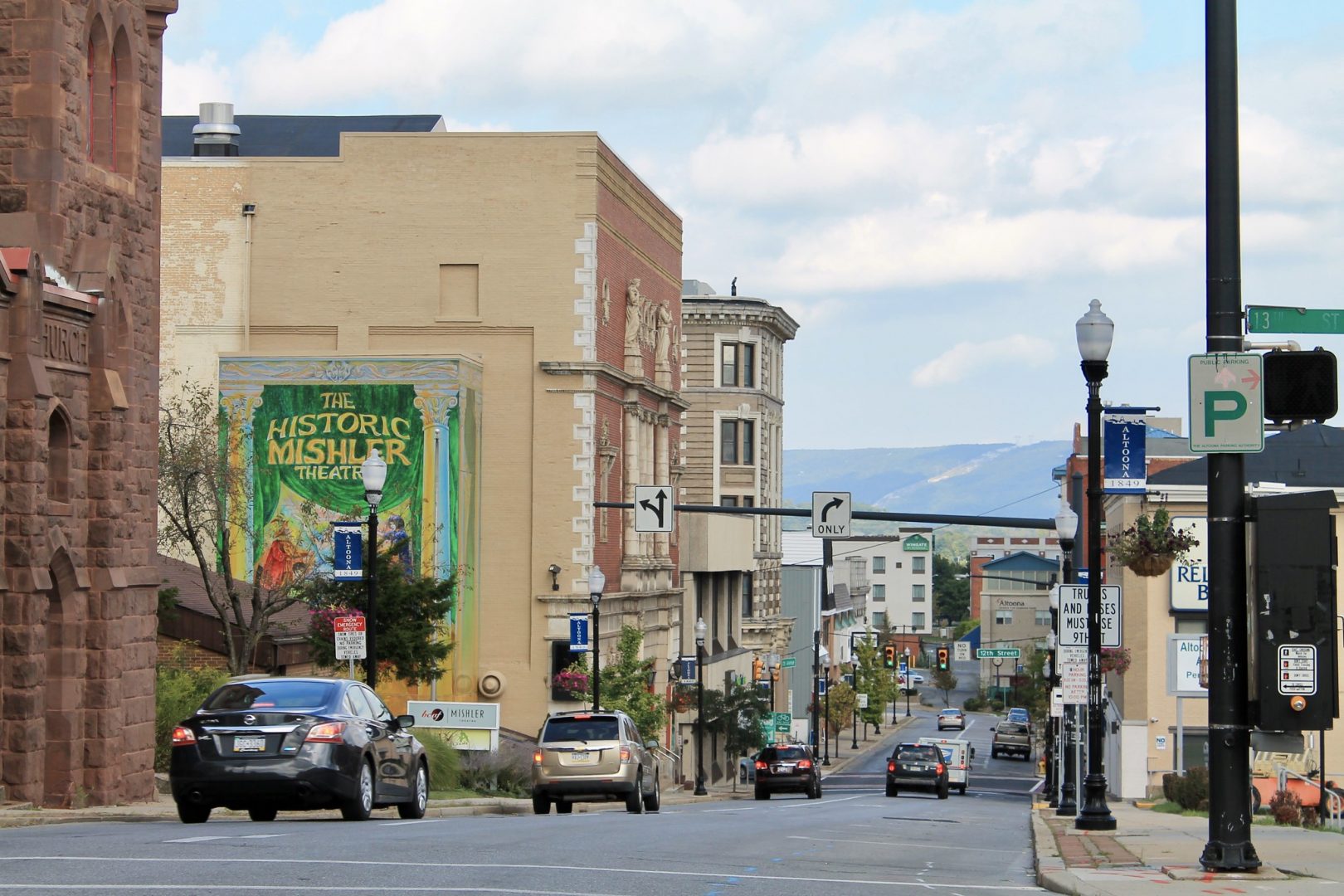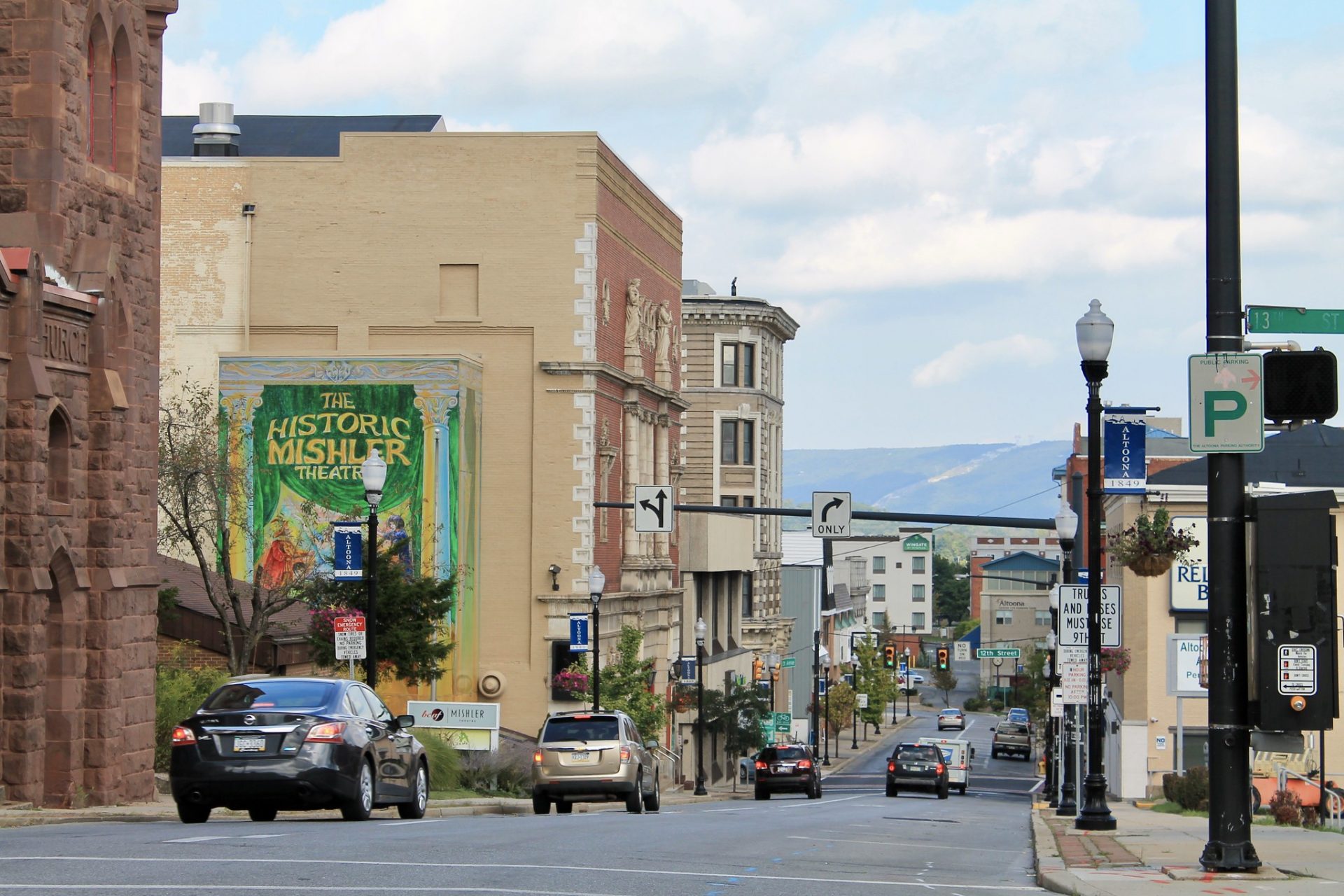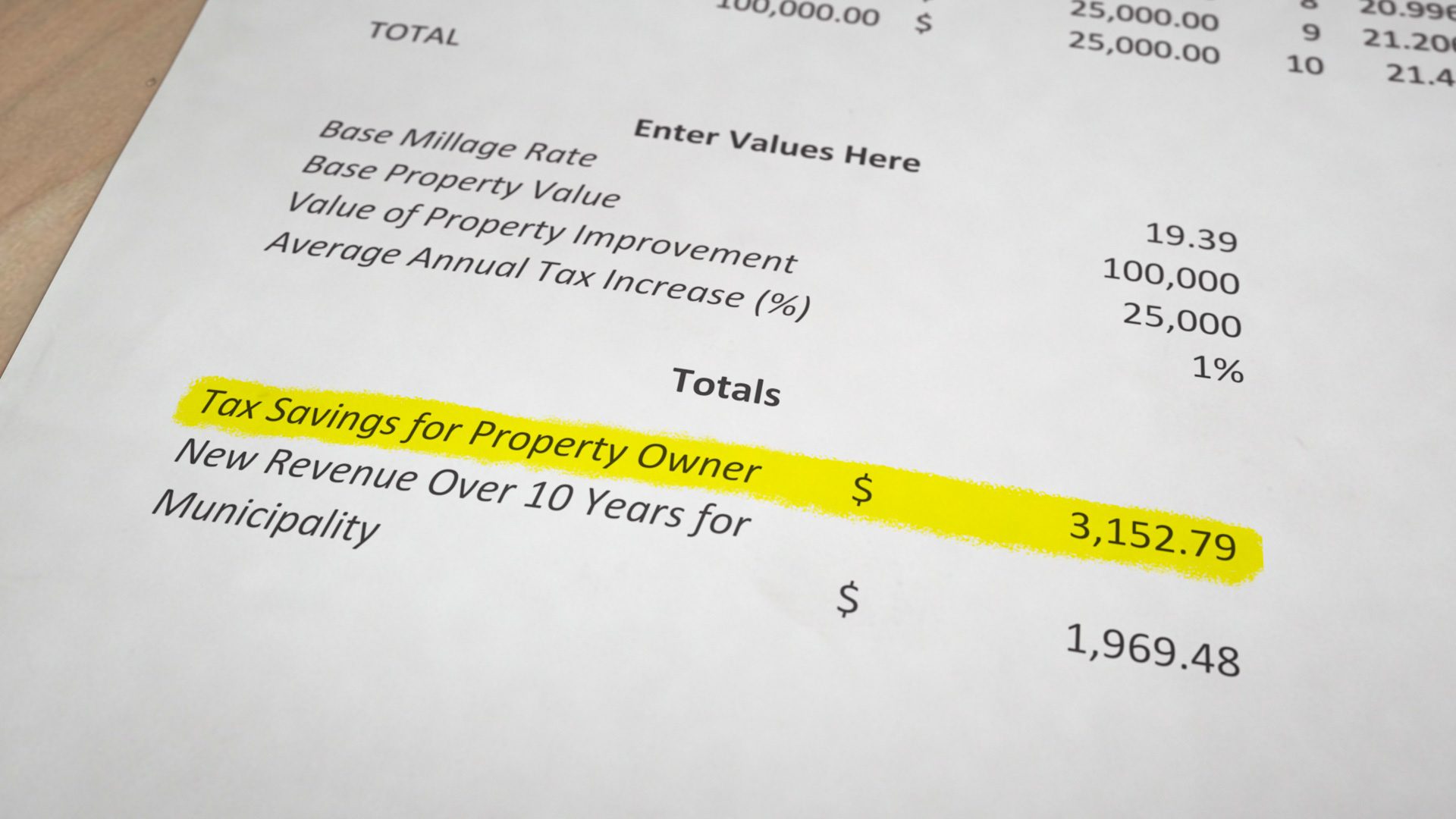
Looking northwest from the intersection of 12th Ave. and 13th St. in downtown Altoona, Pa.
Courtesy Jon Dawson via Flickr.com

Looking northwest from the intersection of 12th Ave. and 13th St. in downtown Altoona, Pa.
Courtesy Jon Dawson via Flickr.com

Courtesy Jon Dawson via Flickr.com
Looking northwest from the intersection of 12th Ave. and 13th St. in downtown Altoona, Pa.

Courtesy Jon Dawson via Flickr.com
Looking northwest from the intersection of 12th Ave. and 13th St. in downtown Altoona, Pa.
UPDATE: Gov. Wolf signed SB 352 on Tuesday, July 14.
Altoona Mayor Matt Pacifico says his city is experiencing a renaissance. Since it became the largest city to successfully exit Act 47 — the state’s recovery program for municipalities in financial distress — Altoona has seen renewed interest in downtown investment, a phenomenon helped along by the Local Economic Revitalization Tax Assistance program.
LERTA, as it is known, was created in 1977 to help encourage redevelopment of aging or deteriorating commercial properties by allowing local taxing authorities — municipalities, counties, and school districts — to waive property tax payments on improvements for up to ten years.
While statewide data on the program’s effectiveness is hard to come by, some cities, like Altoona, track building permits issued in LERTA zones. Over an 18-month period prior to the reauthorization of Altoona’s LERTA program in 2019, Pacifico said $4.1 million in property improvements occurred under the program, providing a boon both to the local economy and the city’s coffers, which, in time will receive additional revenue without having to raise the tax rate.
A program similar to LERTA — the Improvement of Deteriorating Real Property or Areas Tax Exemption Act — exists for deteriorating residential areas, and a new program with a similar aim is on the horizon, likely soon to be added to the mix of tax incentive options for local governments trying to spur property development.
The state House and Senate each passed Senate Bill 352, which would broaden the scope of the authorized tax incentives to include the revitalization of blighted areas and also explicitly authorize municipalities to implement the incentives for mixed use development, whether new construction or redevelopment of abandoned and blighted properties.
“I believe this bill could help play a role in helping to regenerate such properties in our communities,” said state Sen. Judy Ward (R-Blair), the bill’s sponsor.
» Sign up for The Context, our daily newsletter about governing and governments across Pennsylvania.
Redeveloping blighted properties tends to have lower profit margins than new construction on vacant land, and it can come with the added disadvantage of an increased tax assessment once the work is completed. Particularly in cities and towns with fiscal struggles and already sky-high property taxes, the tax hit can be a disincentive to fix up properties that are in disrepair. The legislation would provide some property tax relief as a way to make these types of projects more profitable for developers while still preserving the long-term tax revenues for municipalities.
“The bill does not create any new requirements; it only gives municipalities another option to rehabilitate blighted properties that create a dangerous eyesore in the community,” Ward added in a press release.
Under the bill, which has yet to be signed by the governor but passed both chambers of the General Assembly unanimously, a local taxing authority would have the option to abate a portion of the property taxes on new construction or improvements to blighted properties over 10 years. In the first three years, all of the tax on improvements could be abated, and the portion would diminish on a sliding scale until the tenth year, after which a property owner would be responsible for all the taxes. In total, according to a PA Post analysis, upwards of 60 percent of the accrued tax could be waived over a 10-year period.

Ben Pontz and Tom Downing / PA Post
An example of how much a developer would save on property taxes over 10 years if making $25,000 in improvements on a $100,000 property in Gettysburg, Pa.
But there are a few provisos. First, the property value must increase by at least 25 percent. Second, the tax exemption would be canceled with back taxes owed if there is a violation of state law or the property maintenance code that goes unaddressed. Third, the incentive cannot be combined with other tax incentive programs such as LERTA. And fourth, any mixed use properties improved under the incentive program cannot include gas stations, drive-throughs, heavy manufacturing plants, or adult entertainment establishments on the first floor of the property for “health and safety reasons.”
Those stipulations are an important part of the program and contribute to making this a good deal for municipalities, said Winnie Branton, an independent community blight reduction consultant.
“It’s just adding to the toolbox for municipalities that are looking for ways to bring reinvestment to blighted property,” she said. “If you look at some of the downtown areas across Pennsylvania, the thriving downtowns all have mixed use developments in the downtown area. It makes sense to try to incentivize or make sure that mixed use developments are included within the tax exemption program.”
Because the tax abatement applies only to the increase in a property’s value, it can have only a positive effect on a municipality’s bottom line by stimulating investment that otherwise may not have occurred. That can help a municipality’s long-term financial picture.
To Mayor Pacifico, this program adds another tool for his city’s ongoing revitalization efforts.
“By pairing these programs together and being able to find ways to utilize all the resources that are out there, we can tap into unlimited potential in our city by how we’re able to clean them up and to attract people here and attract businesses here,” he said. “We’re continuing to focus on the revitalization that is occurring in downtown Altoona, and that’s something that we’re going to continue to push for … That’s definitely a big picture thing, to continue to see that momentum and that growth continue to happen.”
Although tax incentives like this one are commonly used to spur investment at both the state and federal level — Opportunity Zones were a cornerstone of the 2017 federal tax overhaul — some analysts question whether they are the most efficient approach to solve the underlying problems that contribute to blight and disinvestment in the first place.
Stephen Herzenberg, executive director of the economic policy-focused Keystone Research Center, said that structural challenges such as fragmented municipalities and small school districts create an “unsavory situation where you have tax rates that are high and they still don’t raise enough money to adequately fund schools or provide good services.” That can lead to a cycle of outward movement of people and businesses from declining communities.
While tax incentives like this one might have some positive effects at the margin, Herzenberg said that — challenging as it is to muster the political will — reconfiguring education funding from the state and consolidating some municipalities and school districts would probably have a greater effect towards revitalizing struggling communities.
“It feels a bit like the tax abatements are a Band Aid,” he said. “And there’s a chance you put the Band Aid on the arm and not the cut.”
But to Levana Layendecker, deputy director of the Housing Alliance of Pennsylvania, any program that might be able to spur investment in the development of affordable housing is worth a try, and this one falls into that category. Blighted properties often sit undeveloped for years, which makes them “not particularly desirable” for redevelopment, she said. Using the tax structure to encourage those types of projects is part of her organization’s strategy to increase the availability of affordable housing statewide.
“Affordable housing is much more expensive to build than market rate housing, and any kind of incentive — ways — that you can make that more affordable to the developer is helpful,” she said. “I think something like this in conjunction with some of the other legislation we hope to see pass soon … you put all those pieces together and you just have a much more feasible project than if you don’t have it.”
A spokesperson for the governor said he plans to sign the bill.
» PA Post is an independent newsroom covering policy and government in Pennsylvania. For more, go to www.papost.org.
The days of journalism’s one-way street of simply producing stories for the public have long been over. Now, it’s time to find better ways to interact with you and ensure we meet your high standards of what a credible media organization should be.